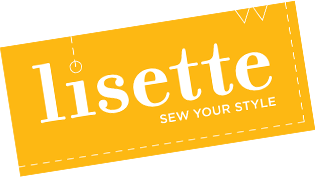As many of us get ready for the holiday weekend, we want to wish all of you Happy Thanksgiving!
This is my first Thanksgiving in NYC, so I’ll be heading to the Macy’s Thanksgiving Day Parade in the morning then home to cook a big dinner for visiting friends. I’m also looking forward to doing a bit of sewing and starting an ambitious hand embroidery project over the long weekend.
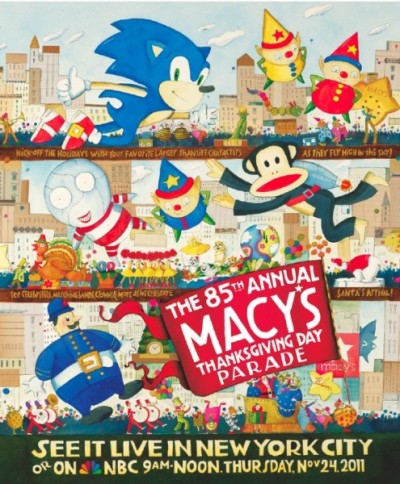
Illustrator Melissa Sweet designed this year’s Macy’s parade poster. She is also a fan of Lisette patterns! To find out more about Melissa and get some great ideas for kid’s activities to do over the weekend check out Liesl’s recent Disdressed blog post here. Let us know your plans for Thanksgiving and have a great holiday!
Even though the weather is starting to turn cold and blustery here in NYC, I love to wear lots of color throughout the fall and winter months. Here’s my take on the Market Skirt with the kick pleat option made up in a cotton twill from the Lisette Fall fabric collection.
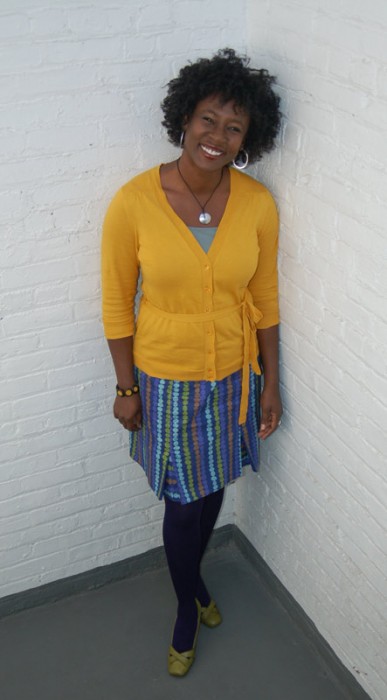
Since I was working with a directional print, I turned the stripes sideways inside the kick pleats for a fun detail. I usually wear my shirts and sweaters over the top my skirts, so I left off the button tabs at the waist.
I was inspired by all the fun colors in this print so I took a colorblocking approach to styling it to highlight some of the colors. As soon as the weather turns cool I raid my drawer full of colored tights and I just happened to have the right shade of purple to go with the skirt. And I’ll take any excuse to pull out my lime green pumps.
I would love to see how you style this skirt. Post your own photos to the Lisette Flickr group and show us how you wear your style!
Have you been noticing ikat prints lately? We’re seeing them everywhere right now: on dresses, jackets, skirts, even chairs and pillows.
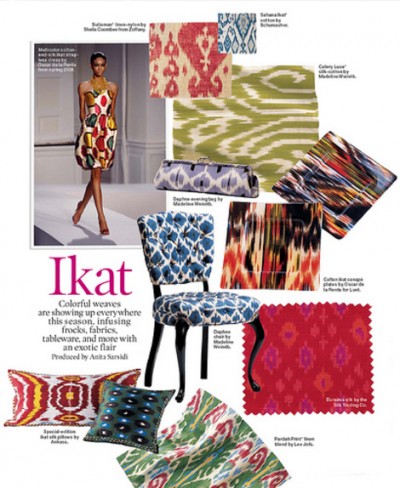
Ikat is a weaving technique in which the threads are dyed before the fabric is woven, which is why the woven pattern looks slightly uneven. We like it because it looks soft and very sophisticated.
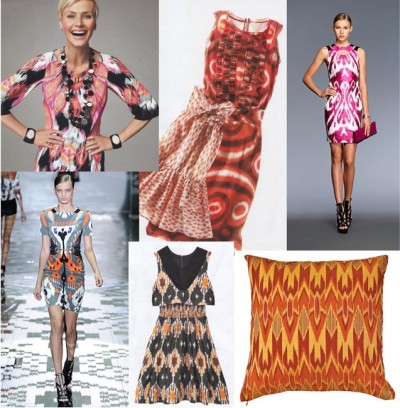
My favorite print in the fall Lisette fabric collection is an ikat. I’ve made my Continental Skirt with the fabric, and it would also make a great Passport Jacket or Itinerary Dress.
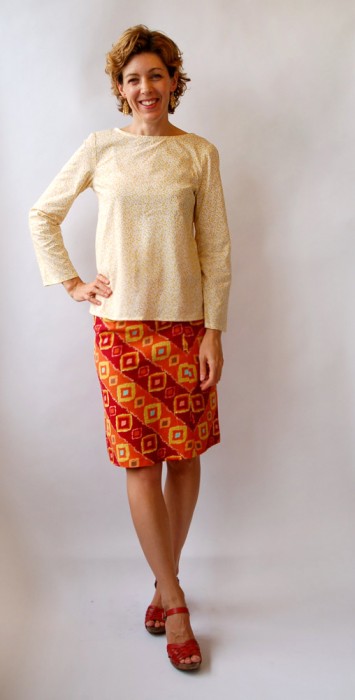
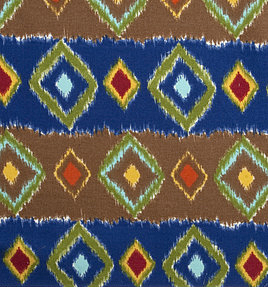
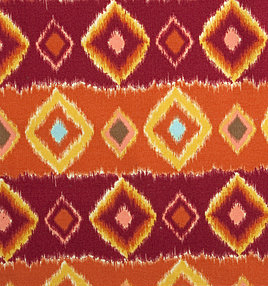
And, best of all, I just found out that all Lisette fabrics are now on sale at JoAnn.com. You can pick up this print at a discount for a limited time.
Everyone has their favorite go-to sewing books on their sewing shelf. Liesl mentioned some of her favorite pattern fitting and alteration books here and here. It’s also great to have a few general sewing reference books that take you through the basics and beyond. Here are the reference books I regularly reach for when I need creative ideas and technical assistance:
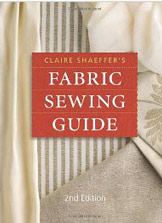 Claire Shaeffer’s Fabric Sewing Guide – Hands down this is the most used book on my sewing shelf.
Claire Shaeffer’s Fabric Sewing Guide – Hands down this is the most used book on my sewing shelf.
I reach for it primarily when I’m planning a new project with a fabric I haven’t sewn with before or sewing a tricky fabric that needs to be handled with care.
This comprehensive guide will ensure you are using the right needles, notions, and stitching techniques on the right fabric. It also includes great troubleshooting advice for working with tricky fabrics from fabric prep and cutting tips to seam finishes and hem applications.
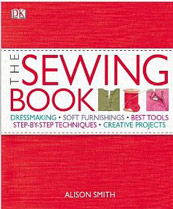 The Sewing Book by Alison Smith – I am a visual learner, so this hefty technique guide wins points from me because everything is shown in big full color step-by-step photographs. I can look at the photos and know exactly how what I’m doing should look like on that step.
The Sewing Book by Alison Smith – I am a visual learner, so this hefty technique guide wins points from me because everything is shown in big full color step-by-step photographs. I can look at the photos and know exactly how what I’m doing should look like on that step.
I use the book to assist me with techniques that are hard to visualize with just written directions and to review lots of technique options for changing or creating a pattern.
Particularly ideal for garment sewers, whether you are putting in facings, setting in sleeves, or sewing a lining, this book shows you all the essential techniques you need to make almost anything.
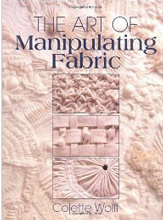 The Art of Manipulating Fabric by Colette Wolff – If you want to get creative with your sewing this unique book shows how much you can do by experimenting with fabric manipulation and three-dimensional fabric effects such as gathering, shirring, ruffling, tucking, pleating, weaving, quilting and more.
The Art of Manipulating Fabric by Colette Wolff – If you want to get creative with your sewing this unique book shows how much you can do by experimenting with fabric manipulation and three-dimensional fabric effects such as gathering, shirring, ruffling, tucking, pleating, weaving, quilting and more.
I turn to this book for interesting techniques that can turn a simple project into something extraordinary. Now, don’t let the black and white photographs and text-heavy design scare you away from this book. There is a wealth of information here that you won’t find anywhere else. If you are an adventurous sewer looking for new ways to work with fabric, then this book is for you.
Do you have these books on your shelf? How do they work for you? In the comments feel free to add to my list and recommend your favorite general sewing reference books.
I completely forgot to put on the scarf I had been wearing when I got dressed in the morning, so I feel like this photo is incomplete. (That’s what happens when you wait until after lunch to take a photo.) But I wanted to show you the pants, and that’s what this photo is really about.
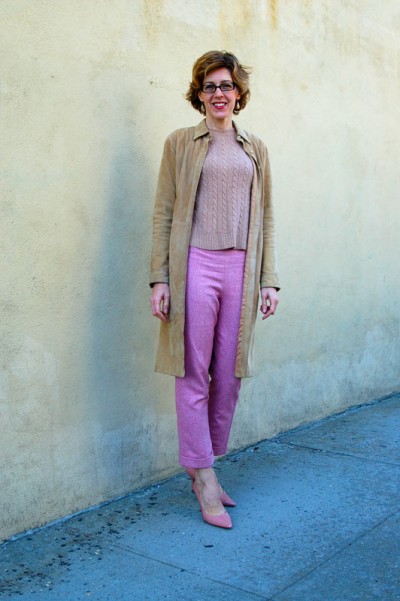
These pants are made from the Portfolio pattern. I eliminated the button tabs and made them from a wool/cashmere herringbone I found at Mood last summer. They’re lined with Bemberg, which is my favorite lining quality.
It’s very easy to line these pants. Just sew up the lining separate from the outside fabric and slip the lining inside the pants before attaching the yoke. Baste the two layers together at the top and then attach the yoke. I finished the hems separately, and the lining helps to give the herringbone fabric a little more structure and makes it less drapey.
The jacket is suede, and I’ve owned it for more than 10 years now. It’s a classic style that I wear as both a dress and a jacket. You could make a similar jacket using View A of the Traveler Dress and making it in Ultrasuede.
There are so many reasons to love hand embroidery. First of all you can take it anywhere. Second, it’s an easy way to add cool handcrafted details to any project. And third, it’s really fun.
Even if you are not as passionate as I am about handstitching, you can’t deny the simple elegance of running stitch. There is no end to the cool details you can create just by adding running stitches to your next sewing or refashioning project.
Here’s a fun example on a simple A-line wool skirt. I used crewel thread in related colors to create big circles of running stitch randomly placed on the skirt. It turned a basic skirt into something fun!
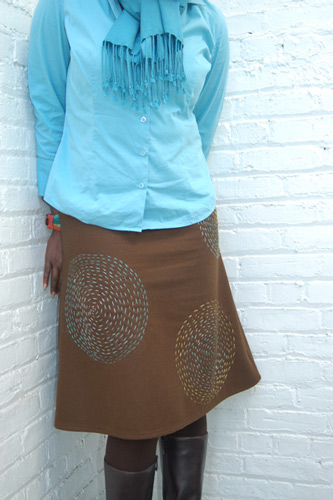
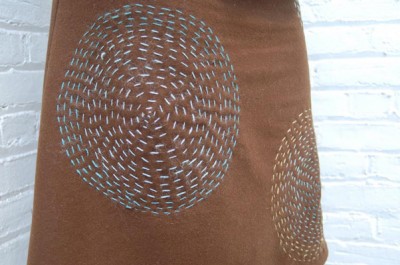
Now it’s your turn. Here are some fun ways to play with running stitch:
- Add running stitches with embroidery thread along a collar, button band, waistband, or cuffs for a touch of detail
- Showcase rows of embroidery in contrasting thread along the bottom edge of a skirt for a pretty hem
- Follow along seamlines and use running stitch to create faux topstitching
- Freehand draw on your fabric with a chalk marker and use a running stitch to bring your unique design to life
- Highlight select lines and shapes in a print design with running stitch to add dimension to the fabric
- Use running stitch to create pattern on a solid fabric by creating simple shapes
Want to experiment? Try any of these running stitch ideas to quickly update a plain garment or sweater from the store or your closet.
Tell us how you get creative with running stitch in your projects!
← Older posts Newer posts →

